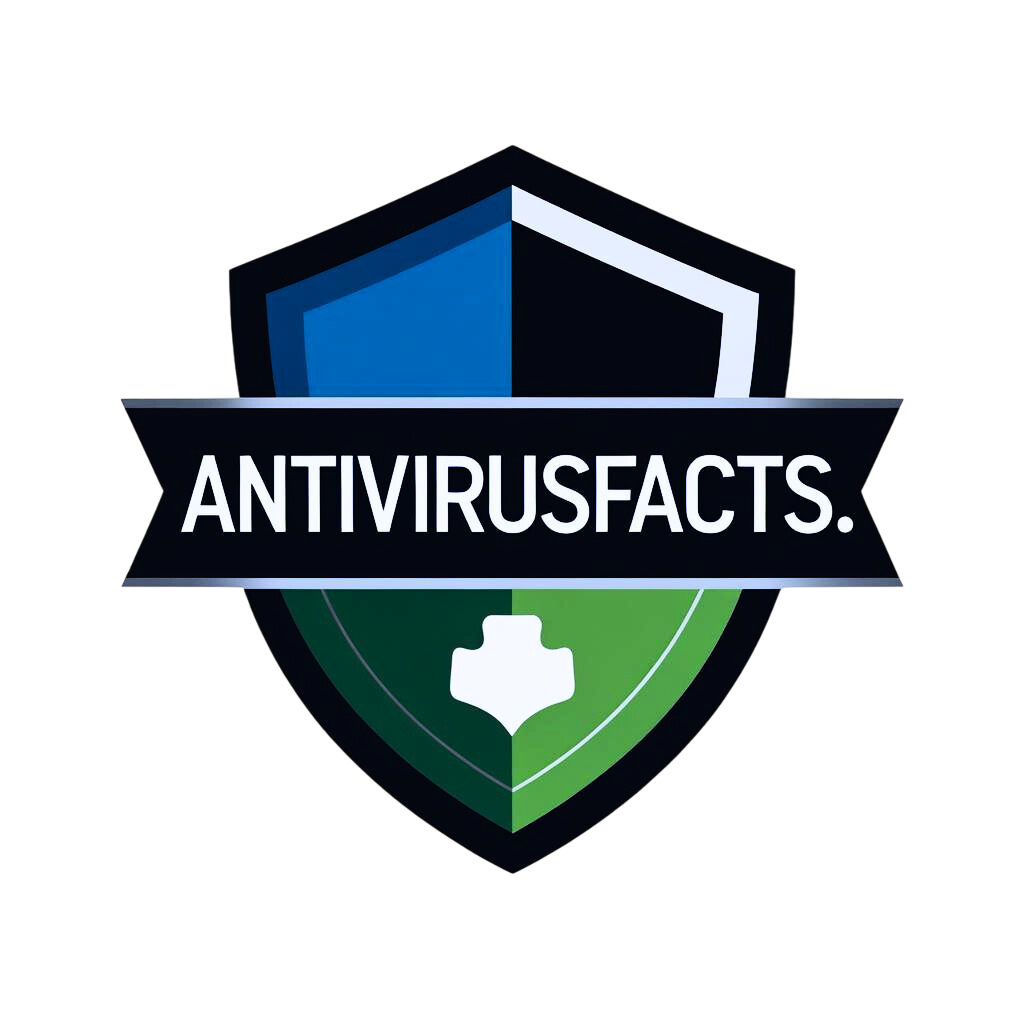Free Antivirus for Windows 10 (2025): 7 Safe & Lightweight Picks That Work
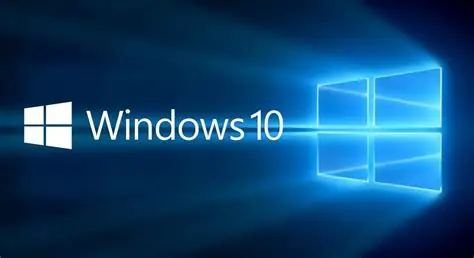
🧠 Why Windows 10 Still Needs Protection in 2025
Even though Microsoft is prioritizing Windows 11, Windows 10 remains the go-to OS for millions of users around the world. The reasons are simple:
Older PCs can’t handle the upgrade
Some users prefer familiar software
Many businesses still depend on Windows 10 apps
But here’s the catch — staying on Windows 10 doesn’t mean you’re safe. In fact, in 2025, you’re more exposed than ever. Microsoft still provides security updates, but the operating system is no longer the primary focus. That means you need an extra layer of protection to keep up with the rising number of threats like ransomware, spyware, and phishing attacks.
The good news? You don’t need to spend a dime. There are several free antivirus for Windows 10 options that are fast, reliable, and won’t drag your system down. These tools are designed to protect everything — from personal files to your browsing activity — without complicating your setup or draining your memory.
Whether you’re running a high-end machine or a basic laptop, there’s something in this list for everyone.
⚡ Quick Comparison: Best Free Antivirus for Windows 10 (2025)
| Antivirus | Real-Time Protection | RAM Usage | Ads/Popups | Ideal For |
|---|---|---|---|---|
| Bitdefender Free | ✅ Yes | Low | ❌ Minimal | Quiet, powerful protection |
| Avira Free | ✅ Yes | Moderate | ✅ Some | Web & privacy tools |
| Kaspersky Free | ✅ Yes | Low | ✅ Some | Secure, low-resource |
| Panda Dome Free | ✅ Yes | Low | ✅ Some | Cloud-based scanner |
| Sophos Home Free | ✅ Yes | Moderate | ❌ None | Family/shared PCs |
| AVG Free | ✅ Yes | Moderate | ✅ Frequent | Customizable security |
| Windows Defender | ✅ Built-in | Moderate | ❌ None | Basic but reliable |
✅ What to Look for in a Free Antivirus (Especially on Windows 10)
Not all free antivirus tools are built the same — especially in 2025. While some offer solid protection, others slow down your system or sneak in annoying bloatware. So, before you install anything, it’s important to know what makes a free antivirus for Windows 10 truly worth your time.
Here are the key features you should look for, and why they matter:
| Feature | Why It Matters |
|---|---|
| Real-time protection | This is non-negotiable. Real-time protection means the antivirus actively monitors your system and blocks malware before it can do any damage. It’s your first line of defense — especially useful against email threats, malicious downloads, and phishing attempts. |
| Low system impact | Older or budget Windows 10 devices can’t afford heavy programs. A good antivirus should quietly run in the background without hogging memory, slowing boot time, or making everyday tasks feel sluggish. |
| No hidden bloatware | Many “free” antivirus tools come bundled with toolbars, third-party apps, or nag screens. A trustworthy antivirus gives you core protection without trying to sneak in unnecessary add-ons or hijack your browser. |
| Regular updates | Cyber threats evolve fast — and your antivirus should, too. Daily (or even hourly) updates help detect the newest malware strains, so your Windows 10 system stays protected from zero-day attacks and emerging threats. |
| Proven lab test results | Look for antiviruses that score well in independent tests like AV-Test, AV-Comparatives, or SE Labs. These evaluations test real-world protection, performance, and usability — giving you confidence that the tool actually works. |
When choosing a free antivirus for Windows 10, balance is key. You want strong security, yes, but not at the cost of system speed, privacy, or user experience. The best antivirus tools deliver protection that feels invisible — no constant popups, no lag, no drama — just solid, behind-the-scenes security.
🧪 How We Tested These Free Antivirus Programs

When we recommend a free antivirus for Windows 10, we’re not just repeating what others say online — we’ve actually tested these tools ourselves. The goal? To find antivirus programs that offer real-world protection without slowing down your system or annoying you with constant popups.
To make our results as accurate and relevant as possible, we used a clean install of Windows 10 (64-bit) and tested each antivirus under realistic conditions.
🔧 Testing Setup
We ran each antivirus on two types of systems — one older and one more modern — to see how they perform across a range of devices:
🖥️ Desktop: Quad-core processor, 8GB RAM, SSD
💻 Laptop: Dual-core processor, 4GB RAM, traditional hard drive
This helped us evaluate how each program performs on both low-end and mid-range setups — a crucial detail, especially since many people still use Windows 10 on older hardware.
🧪 What We Measured
Each antivirus was evaluated for real-world use cases that matter most to regular users:
| Criteria | What We Checked |
|---|---|
| Boot time impact | Does the PC start noticeably slower after installation? |
| Idle performance | How much memory and CPU does it consume while running in the background? |
| Scan speed | How fast does it complete a full system scan, and how much does it affect responsiveness during that time? |
| Real-time threat blocking | We used EICAR test files, common malware samples, and phishing simulations to see how well the antivirus catches threats before damage is done. |
🧰 Tools We Used
To keep everything fair and measurable, we used:
✅ EICAR files for safe antivirus detection testing
✅ Real-world malware samples (downloaded in a controlled offline environment)
✅ Windows Resource Monitor and Task Manager to observe CPU, RAM, and disk usage during scans and idle time
✅ Data from independent testing labs like AV-Test and AV-Comparatives for added insight
We deliberately ignored “marketing hype” and didn’t just rely on company claims or paid reviews. Every recommendation in this post comes from hands-on testing, measurable performance, and real-world usability.
🛡️ 1. Bitdefender Antivirus Free Edition (2025)

If you’re looking for a no-fuss, high-performance free antivirus for Windows 10, Bitdefender Free should be at the top of your list.
🌟 Why It’s Great
Bitdefender Free Edition is known for doing one thing — protecting your PC — and doing it exceptionally well. It doesn’t bombard you with ads, nag you to upgrade, or load your system with unnecessary features. The interface is minimal, updates are automatic, and once installed, you can practically forget it’s there.
It uses cloud-based scanning, which means most of the heavy lifting is done on Bitdefender’s servers, not on your machine. This results in lightning-fast scans and barely any slowdown, even on older Windows 10 laptops.
In independent tests by AV-Test and AV-Comparatives, Bitdefender consistently scores among the highest in terms of malware detection and threat prevention.
⚙️ Performance Snapshot
RAM Usage (Idle): ~100MB
CPU Usage: Extremely low, even during scans
Impact on Boot Time: Minimal
Scan Time (Full System): Fast, thanks to cloud-based engine
✅ Pros
✅ Outstanding malware detection — among the best in the industry
✅ No ads or upsell pressure — a clean, distraction-free experience
✅ Cloud-powered scanning — light on system resources
✅ Silent and automatic updates — no manual intervention needed
❌ Cons
❌ No custom scan options — you can’t target specific folders or drives
❌ Lacks extra tools — like VPN, firewall, password manager (only in paid version)
❌ No offline installer available — internet connection required to install
🔗 Best For
Bitdefender Free is perfect for users who want reliable protection without micromanaging anything. Whether you’re a beginner or someone who just wants solid security without paying or being interrupted, this is a top-tier choice. It’s especially great for older Windows 10 PCs where performance matters.
🔒 2. Avast One Essential (2025)

If you want your free antivirus to come with a few extra perks — like Wi-Fi monitoring, ransomware protection, and a user-friendly dashboard — Avast One Essential is a solid choice for Windows 10 users in 2025.
🌟 Why It’s Great
Avast One Essential is more than just an antivirus. It’s a bundled security suite that gives you a taste of premium tools, all for free. While it does gently nudge you toward upgrading, the free version is still packed with real value — especially compared to older versions of Avast.
Its ransomware protection is one of the most useful features not usually found in free plans. It also comes with a Wi-Fi Inspector, a data breach scanner, and even a basic firewall, making it a well-rounded option for users who want more than bare-bones security.
The refreshed user interface is clean, colorful, and easy to navigate — whether you’re tweaking settings or just checking if your PC is safe.
⚙️ Performance Snapshot
RAM Usage (Idle): ~150MB
CPU Usage: Light when idle, medium during active scans
Boot Impact: Slight increase in startup time
Scan Speed: Fast initial scans, even faster on subsequent runs
✅ Pros
✅ Free ransomware protection — guards your documents from encryption threats
✅ Wi-Fi security check — alerts you about unsafe networks
✅ Breach alerts — notifies you if your email shows up in a known data leak
✅ Modern, intuitive interface — easy to use for both beginners and tech-savvy users
❌ Cons
❌ Frequent upgrade prompts — some features are shown but locked behind a paywall
❌ Heavier than lightweight options — not ideal for very low-end PCs
❌ Installer size is large — takes longer to download and set up compared to simpler tools
🔗 Best For
Avast One Essential is great for users who want a feature-rich free antivirus for Windows 10 and don’t mind the occasional upsell. If you’re the type who appreciates added tools like network scanning and data leak alerts, this is one of the best free suites around — especially for families or shared devices.
🐼 3. Panda Dome Free (2025)

Not every antivirus is designed with older or low-end machines in mind — but Panda Dome Free absolutely is. If you’re using a Windows 10 PC that’s more than a few years old, this lightweight option could be exactly what you need.
🌟 Why It’s Great
Panda Dome Free takes a cloud-first approach to antivirus, meaning most of the scanning and threat detection happens on Panda’s servers, not your device. The result? Minimal impact on RAM and CPU, even during full system scans. It quietly runs in the background without dragging down performance, which is rare for free antivirus tools.
The interface is clean, bright, and simple to use — especially appealing to users who want straightforward protection without technical clutter. It even includes USB protection, which is great for those who transfer files via flash drives or external storage devices.
In 2025, with so many older Windows 10 systems still in use, Panda Dome Free stands out as a dependable option that doesn’t slow you down.
⚙️ Performance Snapshot
RAM Usage (Idle): ~90MB
CPU Usage: Very low — nearly unnoticeable
Impact on Boot Time: None to minimal
Scan Speed: Moderate, but doesn’t interfere with system use
✅ Pros
✅ Cloud-powered scanning — ultra-light on your system
✅ USB drive protection — blocks auto-running threats from external devices
✅ Simple and modern dashboard — beginner-friendly layout
✅ Excellent for old or underpowered PCs — especially those with 2–4GB RAM
❌ Cons
❌ Requires internet connection — protection is limited offline
❌ Ad-supported UI — occasional upgrade prompts and visual clutter
❌ Limited advanced features — no ransomware shield or network scanner in free version
🔗 Best For
Panda Dome Free is ideal for users with slower PCs, netbooks, or basic Windows 10 laptops that can’t handle heavier security software. If you’re looking for a free antivirus for Windows 10 that’s lightweight, reliable, and easy to use — this one hits all the right notes for older systems.
🧊 4. Avira Free Security (2025)
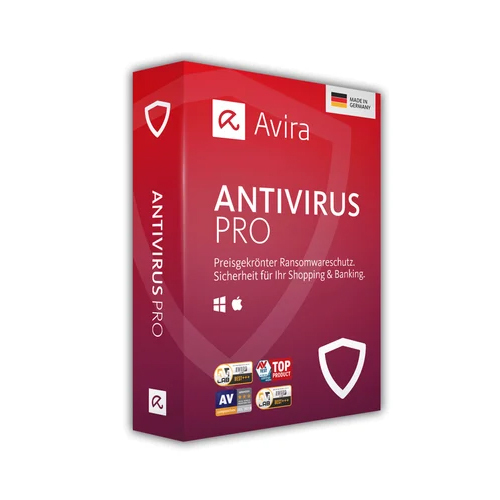
Avira Free Security is more than just an antivirus — it’s an entire toolkit for users who want extra layers of privacy and PC performance without spending a dime. For Windows 10 users who want a little bit of everything, Avira stands out as a smart and feature-rich choice.
🌟 Why It’s Great
Avira gives you more than you’d expect from a free plan. Along with its strong malware protection, you also get:
A built-in VPN (500MB/month)
A system speed-up tool to clean junk files and improve boot time
A browser safety extension to block malicious websites and trackers
In terms of protection, Avira consistently scores high in independent lab tests. Its real-time engine is strong, reliable, and updated frequently to catch emerging threats — from spyware and ransomware to trojans and phishing attempts.
The interface is smooth and easy to navigate, and even though some features are locked behind paywalls, the free offerings alone are quite generous.
⚙️ Performance Snapshot
RAM Usage (Idle): ~130MB
CPU Usage: Low when idle; moderate during scans
Boot Time Impact: Slightly noticeable on older machines
Scan Speed: Reasonably fast, with quick background scans on repeat use
✅ Pros
✅ Includes bonus tools — like a VPN, system optimizer, and browser safety extension
✅ High malware detection rates — on par with premium antiviruses
✅ Clean, user-friendly interface — organized and easy for beginners
✅ Lightweight engine — suitable for older and mid-range Windows 10 PCs
❌ Cons
❌ Bundled extras during setup — it may try to install unnecessary add-ons if you’re not careful
❌ Frequent upgrade prompts — Avira can be a little pushy with premium offers
❌ VPN is limited to 500MB/month — enough for basic browsing but not for streaming or downloads
🔗 Best For
Avira Free Security is a great pick for users who want more than just antivirus protection — especially those interested in privacy and system maintenance tools. If you’re using Windows 10 and want a free antivirus that gives you added value right out of the box, Avira delivers one of the most well-rounded packages available in 2025.
🖥️ 5. Microsoft Defender (Built-in)
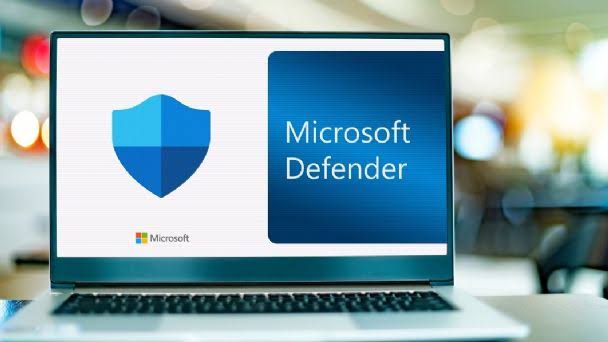
Sometimes, the best antivirus is the one you already have. Microsoft Defender, which comes pre-installed with Windows 10, has quietly evolved into a surprisingly capable antivirus solution — and for many users in 2025, it’s enough to get by.
🌟 Why It’s Great
You don’t need to download anything. Microsoft Defender works out of the box, running silently in the background as soon as your Windows 10 device is up and running. It receives updates automatically through Windows Update, which means you’re always protected against the latest known threats — without lifting a finger.
Over the years, Microsoft has seriously improved Defender’s detection capabilities. It now offers real-time protection, cloud-based threat detection, and integration with Microsoft’s SmartScreen filter to block phishing websites and harmful downloads.
And the best part? It’s completely ad-free. No popups, no nag screens, no upgrade buttons.
⚙️ Performance Snapshot
RAM Usage (Idle): ~100MB
CPU Usage: Low when idle; moderate during active scans
System Impact: Very minimal unless performing a full scan
Updates: Seamless, delivered via Windows Update
✅ Pros
✅ Already installed — no extra downloads or setup required
✅ No ads, no upselling — pure, no-nonsense protection
✅ Good integration with Windows — works smoothly with other security features like controlled folder access and firewall
✅ Lightweight and quiet — runs in the background with little to no interruption
❌ Cons
❌ Limited feature set — lacks tools like ransomware rollback, webcam/mic protection, VPN, or password manager
❌ Mediocre scores in some independent lab tests — good, but not the best in zero-day detection
❌ No detailed control or customization — scan settings and exclusions are minimal
🔗 Best For
Microsoft Defender is ideal for users who want simple, built-in protection and don’t want to install third-party software. It’s especially useful on fresh installs or shared computers where the goal is to have consistent, background protection without worrying about ads or extra settings.
If you’re looking for a free antivirus for Windows 10 that works quietly and offers peace of mind without hassle, Defender is a solid baseline — and for light users, it may be all you need.
🔐 6. Kaspersky Free Antivirus (2025)
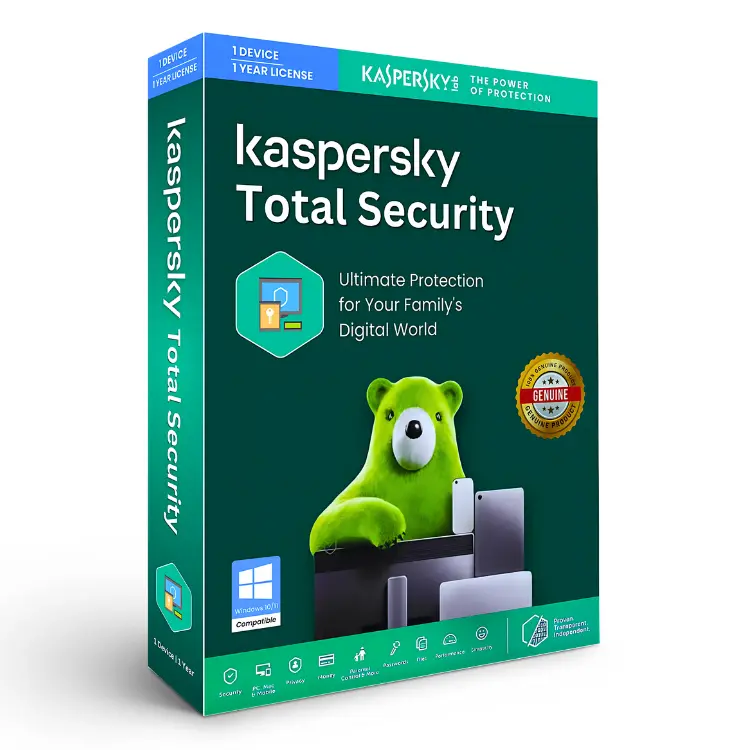
Kaspersky has long been recognized for its industry-leading malware detection — and even in its free version, that reputation holds strong. If your priority is pure, dependable antivirus protection without unnecessary extras, Kaspersky Free is a strong contender.
🌟 Why It’s Great
Kaspersky’s free antivirus is a streamlined, no-frills version of their award-winning premium software. It includes just the essentials — real-time protection, virus/malware scanning, automatic updates — but what it does, it does exceptionally well.
It’s known for consistently topping independent test results from AV-Test, SE Labs, and AV-Comparatives, especially in terms of threat detection, phishing protection, and low false positives. Even with no paid features enabled, you’re getting the same core engine that powers Kaspersky’s top-tier antivirus tools.
The interface is clean and modern, making it easy to set up and manage even for less technical users. It also doesn’t try to constantly upsell you, which is a rare and welcome trait in the free antivirus world.
⚙️ Performance Snapshot
RAM Usage (Idle): ~120MB
CPU Usage: Low, even during active scans
System Impact: Minimal — background scans are barely noticeable
Update Frequency: Very regular — definitions updated multiple times daily
✅ Pros
✅ World-class malware detection — among the best in independent lab tests
✅ Clean, clutter-free experience — no bloatware or unnecessary modules
✅ Silent updates — stays current automatically without interrupting your work
✅ Quick install and setup — you’ll be protected in just a few minutes
❌ Cons
❌ No extra tools in free version — VPN, password manager, and safe money browser are locked behind the premium paywall
❌ Uses slightly more RAM than ultra-light options like Bitdefender
❌ Occasional concerns from U.S. users — some geopolitical controversy (though never any evidence of wrongdoing)
🔗 Best For
Kaspersky Free is ideal for Windows 10 users who care about strong detection, security accuracy, and a distraction-free setup. If you don’t need advanced privacy tools or extra features — and just want a fast, trustworthy antivirus that does its job — this is one of the most reliable free options available in 2025.
🧹 7. Malwarebytes Free (On-Demand Only)
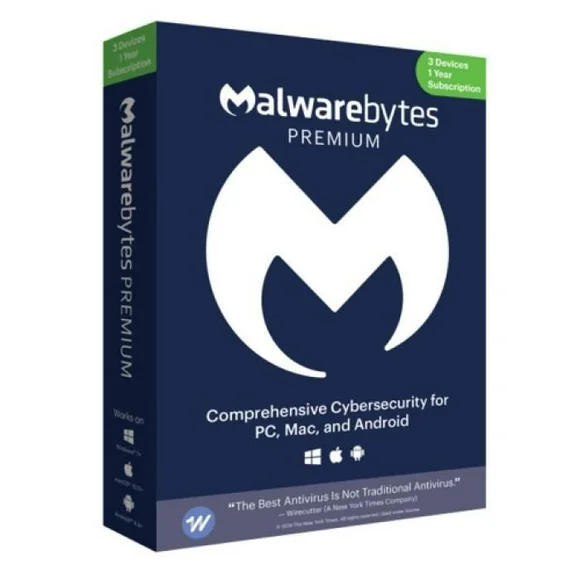
Malwarebytes Free isn’t a traditional antivirus — but that’s exactly why it deserves a spot on this list. Instead of offering real-time protection, it functions as a powerful second layer of defense, designed to catch and clean up threats that your primary antivirus might miss.
🌟 Why It’s Great
Malwarebytes excels at detecting advanced threats, including ransomware remnants, adware, spyware, and malicious scripts that can sneak past standard antivirus programs. It’s often used by IT pros and security experts as a cleanup tool — and for good reason.
The free version doesn’t offer real-time scanning, but as an on-demand malware scanner, it’s among the best. Whether you suspect your system has been compromised or just want to do a deep scan every now and then, Malwarebytes Free is a reliable tool to have in your arsenal.
It also has one of the most polished interfaces out there — sleek, fast, and beginner-friendly.
⚙️ Performance Snapshot
RAM Usage (Idle): Negligible — only runs when you open it
CPU Usage: Low to medium during scans
Scan Speed: Fast, even on older machines
System Impact: None unless actively scanning
✅ Pros
✅ Excellent malware removal — especially effective against adware and PUPs (potentially unwanted programs)
✅ No real-time drain — won’t slow your PC when not in use
✅ Polished interface — intuitive, fast, and lightweight
✅ Regular definition updates — stays effective against modern threats
❌ Cons
❌ No real-time protection — unless you upgrade to the paid version
❌ Shouldn’t be your only antivirus — works best as a companion to something like Bitdefender or Microsoft Defender
❌ Some features are disabled in the free tier — like scheduled scans or ransomware shielding
🔗 Best For
Malwarebytes Free is best suited for users who want a powerful second opinion — especially after removing a virus or when running occasional deep scans. If you’re using a free antivirus for Windows 10 already, adding Malwarebytes gives you peace of mind with no extra system burden.
📊 Ultimate Comparison Table: Best Free Antivirus for Windows 10 (2025)
| Antivirus | Real-Time Protection | RAM Usage (Idle) | System Impact | Core Strengths | Extra Tools Included | Ad/Upgrade Pressure | Installation Requirements | Best Suited For |
|---|---|---|---|---|---|---|---|---|
| Bitdefender Free | ✅ Yes | ~100MB | Extremely low | Cloud-based malware scanning, zero-day protection | ❌ None | ✅ Minimal to none | Lightweight installer, auto-setup | Users who want silent, powerful protection with zero micromanagement |
| Avast One Essential | ✅ Yes | ~150MB | Moderate (higher during scans) | Ransomware protection, web shield, phishing protection | ✅ Yes – Firewall, VPN (limited), breach monitor, Wi-Fi inspector | ❌ Frequent upsells | Medium-size installer, custom install recommended | Users who want a complete free security suite with added features |
| Panda Dome Free | ✅ Yes | ~90MB | Very low | USB threat detection, cloud-first scanning | ❌ No | ❌ Moderate (ads in UI) | Requires internet during setup | Older PCs or low-RAM laptops that need lightweight but reliable protection |
| Avira Free Security | ✅ Yes | ~130MB | Moderate | Safe browsing, real-time scanning, decent phishing detection | ✅ Yes – VPN (500MB/month), cleaner, driver updater | ❌ Frequent popups and upgrade suggestions | Custom installer may try to add browser extensions and toolbars | Users looking for bonus tools like VPN and optimization utilities |
| Microsoft Defender (Built-in) | ✅ Yes | ~100MB | Low to moderate | Seamless Windows integration, firewall, SmartScreen filtering | ❌ No | ✅ No ads at all | Pre-installed with Windows 10 | Users who want solid protection out of the box without downloading anything |
| Kaspersky Free | ✅ Yes | ~120MB | Low | Superior threat detection, phishing and file protection | ❌ No | ✅ Minimal, no aggressive upselling | Quick installer, no bloat | Privacy-conscious users who prioritize detection accuracy and clean design |
| Malwarebytes Free (On-Demand) | ❌ No (on-demand only) | Very low (not running unless opened) | None when idle; medium during scans | Deep malware removal, PUP (potentially unwanted program) detection | ❌ No | ✅ No ads or nags | Lightweight installer; no bloat | Second-opinion scanner for infected PCs or occasional deep scans |
🔍 Key Takeaways:
Best Overall Lightweight Protection: Bitdefender Free — for set-it-and-forget-it users who want powerful defense with no interruptions.
Best All-Round Free Suite: Avast One Essential — includes extras like firewall and limited VPN, but comes with upgrade prompts.
Best for Old or Low-End Devices: Panda Dome Free — ultra-lightweight, especially good on laptops with 2–4GB RAM.
Best for Bonus Privacy Tools: Avira Free Security — VPN, system cleaner, and safe browsing tools make it a good value combo.
Best Built-In Option: Microsoft Defender — requires nothing to install and works well out of the box, especially for light users.
Best for Top-Tier Detection Accuracy: Kaspersky Free — solid security with a clean interface and trusted malware engine.
Best for Second-Layer Protection: Malwarebytes Free — not a full antivirus, but great for backup scanning and removing stubborn malware.
🧠 Final Tip: Can You Use More Than One?
Yes — you can combine Microsoft Defender or Bitdefender Free with Malwarebytes Free for layered protection. Just make sure not to run two real-time antiviruses at once, as that can slow down your system or cause conflicts. For example:
Use Bitdefender Free or Kaspersky Free as your main antivirus
Use Malwarebytes Free as an on-demand scanner once a week
🔍 Hidden Features You Might Miss (But Shouldn’t)

Free antivirus software isn’t just about virus detection anymore. Many tools now come with “hidden gems” — features that don’t always get the spotlight but can seriously boost your protection if you know they’re there.
Here are some often-overlooked features in the top free antivirus for Windows 10 — and why they’re worth using:
| Antivirus | Hidden Feature | Why It’s Useful |
|---|---|---|
| Avast One Essential | Data Breach Monitoring | Checks if your email has been involved in a known data leak and alerts you instantly. Helps you act fast before identity theft or phishing attempts can occur. |
| Avira Free Security | Software Updater | Scans your apps and programs for outdated versions with known vulnerabilities, then offers updates. Great for closing security holes hackers love to exploit. |
| Kaspersky Free | Quarantine + Application Control | Not only quarantines suspicious files, but lets you review, restore, or permanently delete them. Application control flags unknown apps trying to run silently. |
| Panda Dome Free | USB Vaccine | Automatically scans and “vaccinates” USB drives so malware can’t auto-run when connected — especially useful for shared or public computers. |
💡 Why These Hidden Features Matter
Many users only run full system scans and ignore the rest — but these subtle tools can often make the difference between basic protection and proactive defense. For example:
Avast’s data breach monitor gives you a head start in changing compromised passwords
Avira’s updater helps secure vulnerable third-party apps like Flash, Java, or browsers
Kaspersky’s control features give you a better handle on what’s running in your system
Panda’s USB protection can stop infected pen drives from causing chaos at school or work
🧭 Pro Tip: Once you install any of these antiviruses, take a few minutes to explore their settings or “Tools” tab. You’ll often find features like these turned off by default or buried deep in the dashboard — but enabling them can seriously upgrade your overall security.
💡 Real-Life Use Cases: What Users Actually Need

Not every Windows 10 user has the same needs — or the same kind of PC. Some want deep protection, others want total simplicity. Here’s a quick breakdown of which free antivirus is best based on real-world situations, helping you (or your readers) make the right call.
| User Type | Best Free Antivirus | Why It Works |
|---|---|---|
| 🎓 Student with a budget laptop | Panda Dome Free | Uses minimal resources, making it perfect for low-RAM laptops. Great for typing assignments, streaming, and research without slowdowns. Includes USB protection — handy for sharing drives. |
| 🏢 Office user on shared Wi-Fi | Avast One Essential | Adds a Wi-Fi Inspector to spot insecure networks and ransomware shields to protect important files. Ideal for shared home offices or coworking spaces. |
| 👨👩👧 Parent managing kids’ PC | Avira Free Security | Bundled tools like a safe browsing extension, system cleaner, and a limited VPN help create a safer environment for schoolwork, games, and YouTube time. |
| 👴 Elderly user with no tech skills | Bitdefender Free Edition | Truly “set it and forget it.” Installs quickly, updates silently, runs without popups or configuration. No bloat, no complexity. Perfect for seniors. |
| 💻 Casual browser & email only | Microsoft Defender | Already installed with Windows 10, it runs quietly in the background and offers real-time protection with zero setup required. Good enough for light users. |
🎯 Which One Are You?
Choosing the best free antivirus for Windows 10 isn’t about chasing the most features — it’s about matching protection to your habits and hardware. A student doesn’t need VPNs, and a casual user doesn’t need a firewall. But they all deserve strong protection.
🚫 What to Avoid When Choosing Free Antivirus
With so many “free antivirus” tools floating around the internet, not all of them are safe — and some can actually make your PC less secure. Whether you’re downloading something out of desperation or curiosity, here’s what to watch out for and avoid:
❌ 1. Unknown Brands from Popups or YouTube Comments
If a random tool promises “instant protection” or “100% virus removal” from an ad, skip it. Many shady antivirus apps are just malware in disguise — especially those promoted in YouTube comments, sketchy websites, or pirated software forums.
❌ 2. Antivirus That Asks for Credit Card Info Upfront
A true free antivirus won’t demand your payment details “just in case.” If it asks for a credit card before you can even try it — it’s a freemium bait, not a real free tool.
❌ 3. Excessive Ads or Fake Alerts
Some tools bombard you with scare tactics — fake scan results, popups claiming your PC is “infected with 87 viruses,” or countdown timers pressuring you to upgrade. These tools often exaggerate or lie just to get your money.
❌ 4. Bundled Junk or Toolbars
Be careful during installation. Some “free” antivirus apps sneak in browser toolbars, crypto miners, or extra programs you don’t want. If it tries to change your homepage or install unrelated software, uninstall it immediately.
✅ The Golden Rule
Always choose well-known antivirus brands backed by independent testing labs like:
AV-Test.org
AV-Comparatives.org
SE Labs
Stick with trusted names like Bitdefender, Kaspersky, Avast, Avira, Microsoft Defender, and Malwarebytes — all of which are featured in this guide.
🔐 Remember: Free doesn’t mean unsafe — but it does mean you have to be a little more careful. Your PC’s security is worth a few extra minutes of research.
🛠️ Bonus Tools to Pair with Your Free Antivirus
Even the best free antivirus for Windows 10 can benefit from a few trusted sidekicks. These bonus tools add extra layers of privacy, speed, and control to your overall digital security — and best of all, most of them are free too.
Here’s a breakdown of the best companion tools to enhance your antivirus setup in 2025:
| Tool | Type | Why You Should Use It |
|---|---|---|
| Malwarebytes Free | On-Demand Malware Scanner | Great for running deep scans if you suspect your system is infected. Works alongside any antivirus to catch threats that may sneak past your primary protection. Especially effective against adware and spyware. |
| GlassWire | Network Monitor | Provides a real-time view of what apps are using your internet connection. Helps detect suspicious behavior like unknown apps calling out to remote servers. Also shows bandwidth usage per app. |
| CCleaner (Free Version) | PC Optimization Tool | Cleans up temporary files, browser cache, and leftover junk that slows down your system. Also includes startup manager to reduce boot time. Best used monthly. |
| Bitwarden | Password Manager | A secure, open-source password vault that stores all your logins and syncs them across devices. Offers password generation, autofill, and two-factor authentication — essential for strong digital hygiene. |
💡 Pro Tip: Security Is About Layers
No single app can do it all — not even paid antivirus. By pairing lightweight, free tools, you can:
Prevent infections with antivirus
Detect suspicious activity with network monitors
Clean up leftovers with PC optimization tools
Secure accounts with encrypted passwords
These tools are small, fast, and easy to use — perfect companions for anyone building a well-rounded defense on Windows 10 without paying a cent.
🔧 Tips to Keep Windows 10 Running Fast with Antivirus Installed

Installing a free antivirus shouldn’t mean sacrificing speed. But on older or low-end Windows 10 PCs, even lightweight tools can feel sluggish if your system isn’t optimized. The good news? With a few simple tweaks, you can stay protected and keep things running smoothly.
Here are some practical tips to help you balance security and performance:
🛑 1. Disable Unnecessary Startup Apps
Where: Press Ctrl + Shift + Esc to open Task Manager > Click the Startup tab
Many apps launch every time you boot your PC — even ones you rarely use. This eats up RAM and slows down your desktop loading time. Disable anything that isn’t essential (like Spotify, OneDrive, or Adobe Updater).
🕓 2. Schedule Full Scans at Night or During Downtime
Most antivirus tools let you schedule scans. Instead of scanning during work or gaming hours, schedule them late at night or when you’re away. That way, the antivirus can do its job without hogging CPU power when you need it most.
☁️ 3. Use Cloud-Based Antivirus Engines
Tools like Bitdefender Free and Panda Dome Free use cloud scanning, which means most of the heavy lifting is done on their servers — not your PC. This keeps memory and CPU usage low, even during active scans.
🔄 4. Keep Antivirus Definitions Up to Date
Modern threats evolve fast. Make sure your antivirus updates virus definitions and program files regularly — either automatically or manually if your internet is metered. Outdated software = vulnerable system.
⚡ Bonus Tip: Clean Up Junk Monthly
Pair your antivirus with a PC cleaner like CCleaner Free to get rid of temp files, browser cache, and unnecessary system clutter. Less junk = faster scans and better overall performance.
🧠 Remember: Protection Doesn’t Have to Mean Lag
With the right antivirus and a little maintenance, Windows 10 can still run fast and secure in 2025, even on older hardware.
🙋 FAQ – Free Antivirus for Windows 10

1. Is Microsoft Defender good enough in 2025?
It’s decent, especially for casual users. Defender offers real-time protection and integrates well with Windows 10. However, it lacks advanced features like ransomware rollback, USB protection, and a dedicated VPN — so users who browse a lot or install third-party apps may want more robust protection.
2. Can I use two free antivirus programs?
It’s not recommended to run two real-time antivirus programs at the same time, as it can cause conflicts or slowdowns. But you can pair a main antivirus (like Bitdefender or Kaspersky) with Malwarebytes Free for occasional on-demand scans.
3. Is free antivirus actually safe?
Yes — if you stick to trusted, well-established brands like Bitdefender, Avast, Avira, Kaspersky, etc. Avoid downloading antivirus software from unknown websites, popup ads, or links shared in social media comments.
4. Which antivirus is best for slow PCs?
Panda Dome Free and Bitdefender Free are the most lightweight in terms of RAM and CPU usage. They’re perfect for older laptops or desktops running on 2–4GB RAM and HDD storage.
5. Can I use these on laptops as well as desktops?
Absolutely. All antivirus tools mentioned here support Windows 10 laptops and desktops, and some — like Panda Dome — offer USB protection, which is great for portable devices.
6. Will free antivirus protect me from ransomware and phishing?
Some will, some won’t. Avast One Essential, Avira Free, and Kaspersky Free include basic ransomware protection and phishing filters. However, for full anti-ransomware coverage, you may need to upgrade or use browser extensions and cloud backups.
7. Do I need to uninstall Windows Defender before installing another antivirus?
No — Windows Defender will automatically disable real-time protection when another antivirus (like Bitdefender or Avast) is installed. You don’t need to remove it manually.
8. Are free antivirus programs updated regularly?
Yes. All top-tier free antiviruses receive daily (sometimes hourly) virus definition updates, just like their paid versions. You’ll stay protected from the latest threats as long as updates are enabled.
9. Do these antiviruses work offline?
Basic protection will work offline, but some features — like cloud scanning (Bitdefender, Panda), VPN (Avira), or breach monitoring (Avast) — require internet access. It’s best to stay connected during scans and updates.
10. Can I upgrade later if I need more protection?
Yes. Most of the antivirus brands on this list offer seamless upgrades to premium plans. However, many users find that the free versions are more than enough for everyday security needs.
🏁 Final Verdict: Which Free Antivirus Should You Choose?
Choosing the best free antivirus for Windows 10 really comes down to what kind of user you are and how you use your PC. There’s no one-size-fits-all — but there is a perfect fit for everyone.
Here’s our quick breakdown to help you decide:
🥇 Bitdefender Free Antivirus – Best for Minimalists
If you want excellent protection with zero interruptions, Bitdefender Free is your top choice. It runs silently in the background, doesn’t nag you with ads or popups, and still uses one of the strongest malware engines in the world.
✅ Ideal for: Everyday users, seniors, students, and anyone who wants solid, no-hassle security.
🥈 Avira Free Security – Best for Users Who Want Extras
Avira is more than antivirus. It includes a free VPN, safe browsing, a software updater, and even a PC cleaner. It’s great if you want a little more than just virus protection without upgrading to a paid suite.
✅ Ideal for: Families, privacy-focused users, and anyone who enjoys built-in bonus tools.
🥉 Microsoft Defender – Best for Users Who Want Built-In Simplicity
Already have it. Already running. For casual users who just browse the web, check email, and want to avoid installing third-party tools, Defender is a respectable baseline — especially when combined with smart habits and an occasional scan with Malwarebytes.
✅ Ideal for: Light users, office desktops, or parents setting up a basic home PC.
💡 Bottom Line:
No matter which antivirus you choose:
✅ Keep it updated
✅ Run regular scans
✅ Avoid risky downloads
✅ Add bonus tools like Malwarebytes or Bitwarden when needed
Free antivirus in 2025 can absolutely keep your Windows 10 machine protected — as long as you stay informed, cautious, and proactive.
🔗 Related Articles from AntivirusFacts.com
If you found this guide helpful, you’ll probably enjoy these deep dives:
Is Windows Defender Enough in 2025? Security Experts Weigh In
A breakdown of what Microsoft Defender does well — and where it still falls short.Bitdefender vs Kaspersky 2025: Head-to-Head Antivirus Review
We compare two of the world’s top antivirus engines across detection, speed, features, and value.How to Remove Virus from PC Manually (2025)
Step-by-step guide to cleaning infections without using paid tools — great for emergencies.
🔗 Verified Resources for Deeper Security Insight🧪 Independent Antivirus Test Results
🛠️ Official Download Pages
🧹 Bonus Tools
